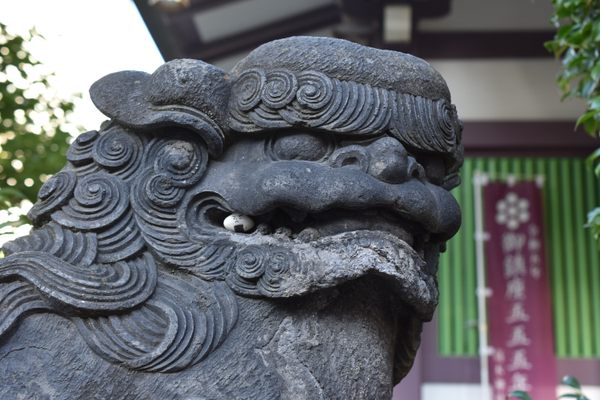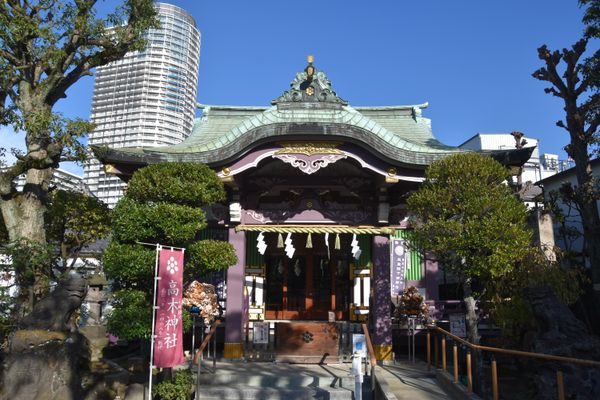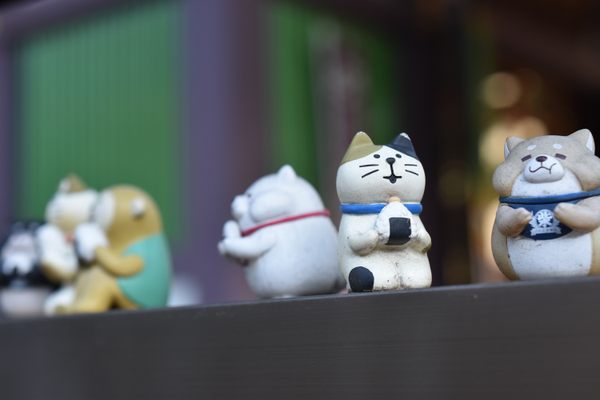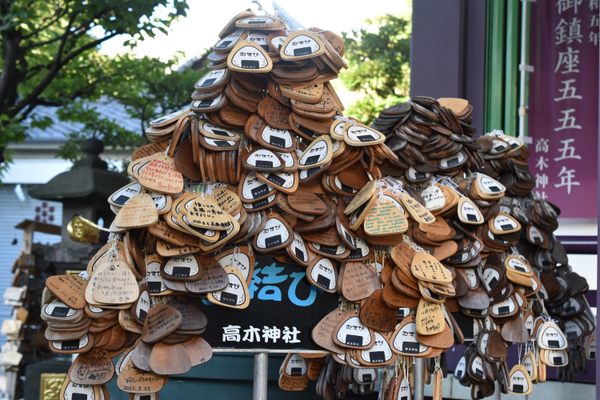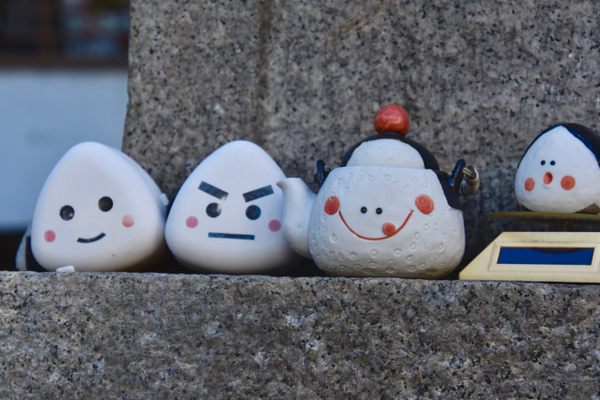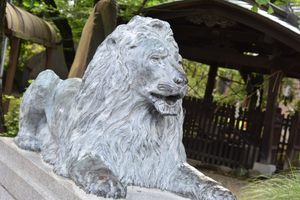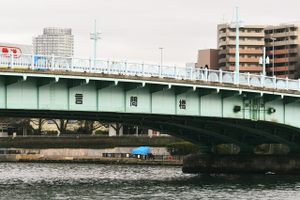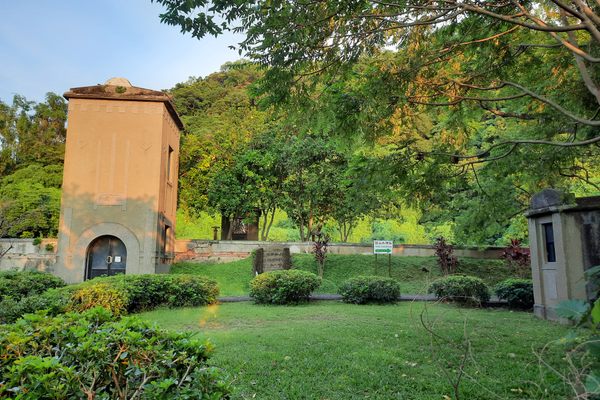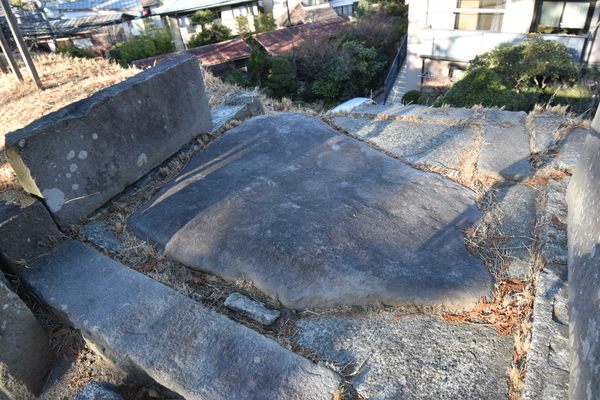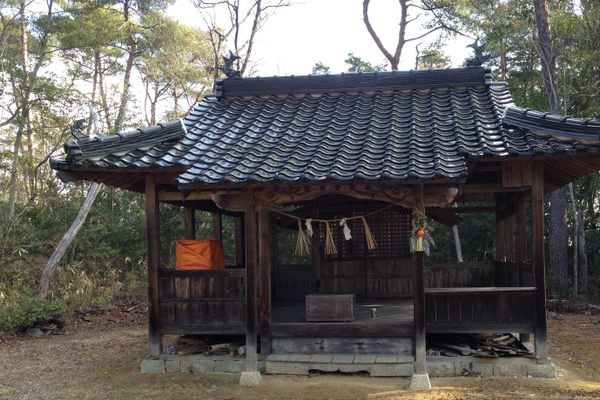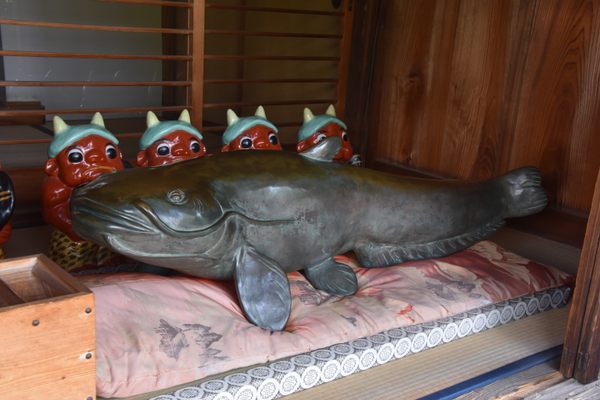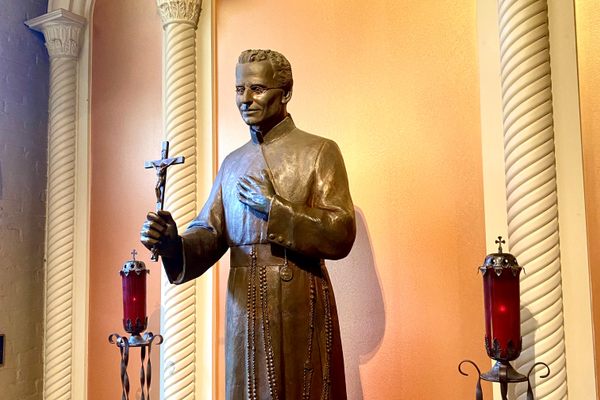About
Go-en is a significant aspect of Japanese culture, a unique concept of relationship, causality, serendipity, opportunity, and fate. It's somewhat similar in spirit to the phrase "God willing" in monotheistic cultures, but more hopeful and associated with good luck in general. The word is also commonly used in romantic context, and many Shinto shrines are popular for their influence in en-musubi ("tying the knot").
Takagi Shrine in Sumida City, Tokyo, is one of the few shrines in Japan dedicated to Takami-Musubi, an androgynous deity of creation and birth, who was born as the second entity in the universe's history according to Japanese mythology. Because of their name, the shrine is associated with the concept of en-musubi, as well as, well, rice balls.
In Japan, rice balls are known as onigiri and omusubi, meaning "clasped" and "fastened," respectively. At Takagi Shrine, you can find them everywhere, piles of tiny pebbles with cute faces and seaweed wrappers drawn on them. Hidden like Easter eggs, even in the guardian lion-dog's mouth, the rounded triangles are easily distinguishable and can be also seen in the prayer boards, amulets, you name it. Visitors can also take a tiny "musubi stone" home upon purchasing a goshuin stamp.
Interestingly, despite the extensive musubi-inspired theming, the shrine's main subject of worship was not Takami-Musubi when it was established in 1468 AD. Prior to the Shinto-Buddhism separation of 1868, the shrine was managed by the adjacent Buddhist temple and originally known as Dairokutensha, dedicated to Dairoku-Tenma-Ō, the "Devil King of the Sixth Heaven."
Identified with the demon Mara, this Buddhist Devil is known as an evil tempter and deceiver of monks. In spite of that, there still are multiple Dairokutensha shrines across Japan. Some believe that they may have been influenced by Oda Nobunaga, the most infamous warlord of feudal Japan, who gave himself the moniker of the Devil King to instill fear into his enemies.
Related Tags
Know Before You Go
Takagi Shrine can be reached from either Hikifune or Oshiage Station, give or take a 10-minute walk from the landmark Tokyo Skytree. While its grounds are accessible 24/7, note that the office (where visitors can buy amulets) is only open from 9 am to 4 pm.
Hidden Japan: Sado Island, Nara & Kyoto
Explore a different side of Japan.
Book NowCommunity Contributors
Added By
Published
August 30, 2023

